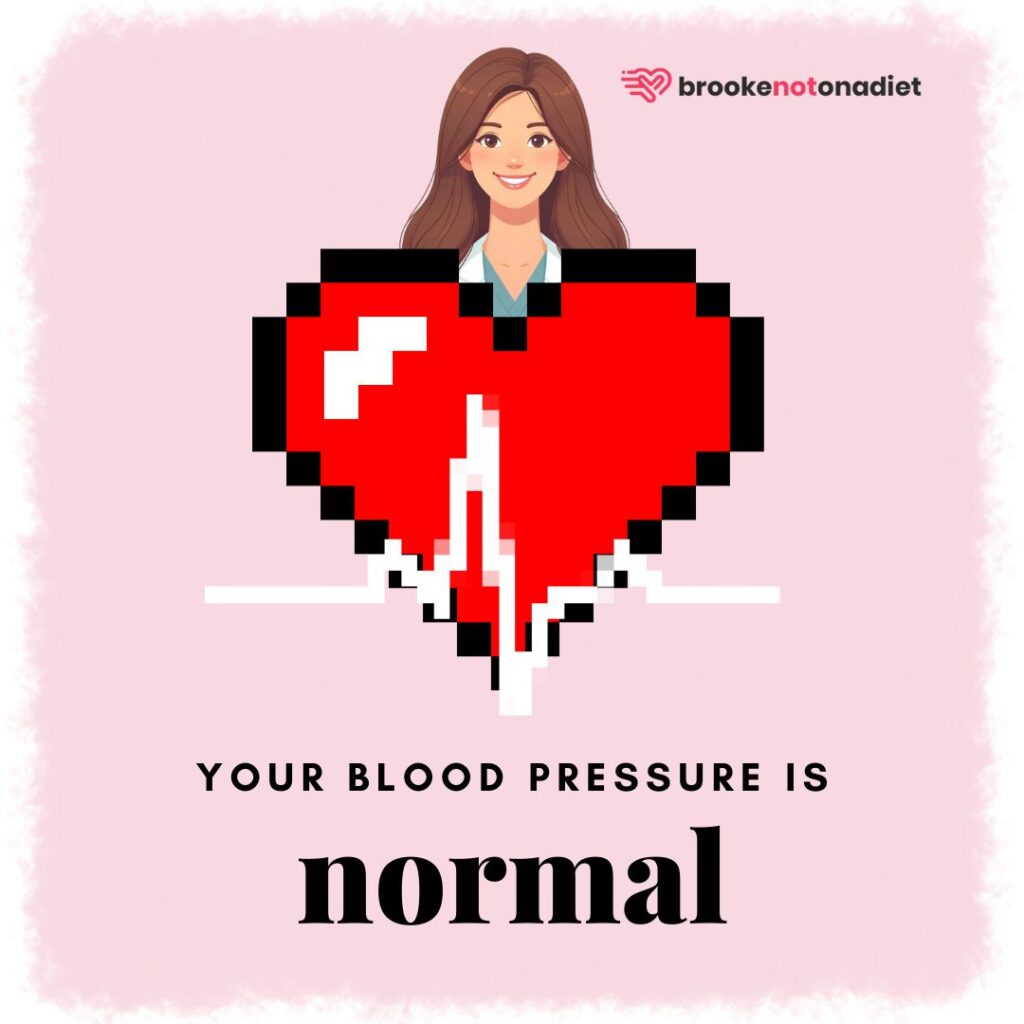
A blood pressure reading of 95/80 mm Hg falls within the normal range and signifies good cardiovascular health across all age groups, including children, adults, the elderly, and pregnant women.
This indicates that the heart and blood vessels are functioning efficiently, reducing the risk of heart disease and other complications.
Maintaining healthy blood pressure involves a combination of lifestyle choices and, if necessary, medical intervention.
- Adopting a balanced diet rich in fruits, vegetables, whole grains, and lean proteins, alongside reducing salt intake, can significantly contribute to normal blood pressure levels.
- Regular physical activity strengthens the heart, making it pump more efficiently, which lowers blood pressure.
- Managing stress effectively and avoiding alcohol and tobacco use are also vital for cardiovascular health.
For individuals with blood pressure slightly above normal or those at risk for hypertension, regular monitoring and possibly medications, as prescribed by a healthcare provider, are important for achieving and maintaining optimal blood pressure levels.
The importance of maintaining a normal blood pressure reading like 95/80 mm Hg cannot be overstated, as it greatly reduces the risk of severe health issues such as heart attack, stroke, and kidney disease.
By adhering to a healthy lifestyle and following medical advice when needed, individuals can ensure their blood pressure remains within a healthy range, promoting overall well-being and longevity.
What is the Mean Arterial Pressure (MAP) for a blood pressure of 95/80 mm Hg?
The Mean Arterial Pressure (MAP) for a blood pressure of 95/80 mm Hg is:
What is the Pulse Pressure (PP) for a blood pressure of 95/80 mm Hg?
The Pulse Pressure (PP) for a blood pressure of 95/80 mm Hg is:
How to keep blood pressure on a healthy level?
Maintaining healthy blood pressure is crucial for overall cardiovascular health and can prevent the development of hypertension and its associated risks.
Here’s a step-by-step guide to keeping your blood pressure within a healthy range.
1. Understand your blood pressure numbers
Learn what your blood pressure numbers mean. A normal blood pressure reading is below 120/80 mm Hg. Knowing your numbers is the first step in managing your blood pressure.
2. Monitor your blood pressure regularly
Regularly check your blood pressure at home with a reliable blood pressure monitor. This will help you track your progress and understand how different factors affect your blood pressure.
3. Adopt a healthy diet
Focus on eating a balanced diet rich in fruits, vegetables, whole grains, and lean proteins. Limit your intake of saturated fats, cholesterol, and sodium to support healthy blood pressure levels.
4. Maintain a healthy weight
Work towards achieving or maintaining a healthy weight. Even losing a small amount of weight if you’re overweight or obese can help lower your blood pressure.
5. Increase physical activity
Aim for at least 150 minutes of moderate-intensity aerobic exercise, or 75 minutes of vigorous-intensity exercise, per week. Regular physical activity can significantly lower your blood pressure.
6. Limit alcohol and avoid tobacco
Limit your alcohol consumption to moderate levels (up to one drink a day for women and two drinks a day for men) and avoid smoking. Both alcohol and tobacco can raise your blood pressure.
7. Manage stress
Find healthy ways to manage stress, such as through regular exercise, meditation, or hobbies. Chronic stress can contribute to high blood pressure.
8. Consult your healthcare provider
Have regular check-ups with your healthcare provider to get personalized advice on managing your blood pressure. Discuss any concerns or questions you have about your blood pressure readings.
9. Consider medication
If Necessary If lifestyle changes are not sufficient to control your blood pressure, your healthcare provider may prescribe medication. Follow your medication regimen as directed and discuss any side effects with your provider.
10. Stay informed and educated
Educate yourself about the factors that can affect blood pressure and the importance of maintaining a healthy lifestyle. Stay up-to-date with the latest health guidelines and recommendations.
Discover the Power of Natural Blood Pressure Support

Introducing our premium Blood Pressure Support supplement, expertly crafted to promote healthy blood pressure levels and cardiovascular wellbeing.
✅ Formulated with natural ingredients for gentle yet effective support
✅ Helps maintain optimal blood pressure levels
✅ Supports heart health and overall cardiovascular function
✅ May aid in reducing the risk of heart-related issues
✅ Manufactured in a GMP-certified facility for quality assurance
Take proactive steps towards a healthier heart with our Blood Pressure Support supplement.
What is a blood pressure chart and how to read it?
A blood pressure chart is a vital tool developed by the American Heart Association, providing a visual representation of various blood pressure ranges from normal to very high.
This chart is grounded in extensive research, including a 2018 study by Muntner et al., indicating that blood pressure benchmarks should reflect ambulatory and at-home variations.
The chart categorizes blood pressure into five stages: Normal, Elevated Blood Pressure (Pre-hypertension), High Blood Pressure (Hypertension Stage 1 and Stage 2), and Hypertensive Crisis, with specific systolic and diastolic mm Hg values assigned to each category.
To read the chart, you look at two numbers in a blood pressure reading: the systolic (upper number) and the diastolic (lower number) pressures, expressed in millimeters of mercury (mm Hg).
For example, a reading of 120/80 mm Hg means a systolic pressure of less than 120 mm Hg and a diastolic pressure of less than 80 mm Hg, which falls into the “Normal BP” category.
The systolic number measures the pressure in your arteries when your heart beats (contracts), indicating how hard your heart is working to pump blood.
The diastolic number measures the pressure in your arteries when your heart rests between beats, reflecting the resistance to blood flow in the blood vessels.
Both numbers are crucial for diagnosing hypertension and determining the risk of cardiovascular complications.
As per Dr. Paul K. Whelton’s insights and the studies mentioned, the chart serves not only as a diagnostic tool but also emphasizes the importance of awareness and management of heart health, urging a focus on non-pharmacological measures for those in the elevated and high blood pressure stages.
Why maintaining a healthy blood pressure is so important?
Maintaining a healthy blood pressure is crucial because high blood pressure, or hypertension, can lead to various serious health issues affecting different organs in your body. Here’s why it’s important to keep it in check.
- Heart attack (myocardial infarction): Persistent high blood pressure can lead to the narrowing and stiffening of arteries, a condition known as atherosclerosis, which increases the risk of a heart attack.
- Stroke (cerebrovascular accident): Elevated blood pressure can harm the blood vessels in the brain, increasing the likelihood of a stroke.
- Aneurysm: High blood pressure weakens the walls of blood vessels, raising the risk of aneurysm formation. A ruptured aneurysm can cause severe internal bleeding.
- Heart failure: Hypertension causes the heart to work harder to pump blood against increased resistance in arteries. Over time, this extra workload can lead to thickening of the heart muscle and reduced efficiency.
- Kidney problems: Chronic hypertension can damage blood vessels in the kidneys, impairing their ability to filter waste and excess fluid from the body.
- Eye problems (retinopathy): Hypertension can damage small blood vessels in the eyes, potentially leading to vision problems or even blindness.
- Metabolic syndrome: Hypertension often coexists with obesity, high blood sugar, and abnormal cholesterol levels, increasing the risk of metabolic syndrome.
- Changes with memory or understanding: Chronic hypertension may adversely affect the brain, increasing the risk of cognitive impairment, vascular dementia, or Alzheimer’s disease.
Best Blood Pressure Monitor

Monitor your blood pressure with ease and accuracy with our advanced Oxiline Pressure Monitor X Pro.
✅ High-precision readings for reliable monitoring
✅ User-friendly design for hassle-free use
✅ Large LCD display for clear readings
✅ Memory function to track your blood pressure history
✅ Portable and convenient for use at home or on-the-go
Stay on top of your health effortlessly with the Oxiline Pressure Monitor X Pro. Order yours now and take control of your wellbeing today!
